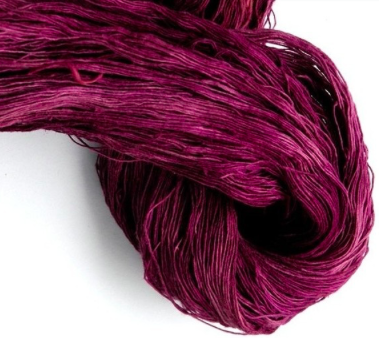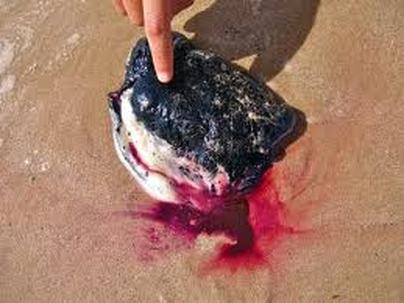
Tyrian Purple Snail
It’s sometimes easy to forget that our technologically complex world wasn’t created out of whole cloth. Or that it wasn’t always here. Without an awareness of the past, “the sense of time falls in upon itself,” writes Lewis Lapham, “collapsing like an accordion into the evangelical present.”“Vintage Tech,” a column by B. Alexandra Szerlip, will examine some of the under-the-radar stories, personalities and techniques that inform our 21st century lives.Today is Habacuc Avedano’s 78th birthday. Seated in the dirt courtyard that separates his two-story cinderblock home from the outdoor, wood-burning kitchen, he recalls the first time his uncle introduced him to caracol purpura.
If it doesn't work for you because you don't have the key on your keyboard, or can't find it because of foreign layout, whatever, you can always edit input.cfg in your user profile dir and change/add://debug keys bind showconsole '`'and substitute the tilde symbol with something you have on your freakin' keyboard. Go to gamedirprofilesautoexec.cfg and open the file using Notepad. Put this line as the final line in the autoexec so it will trigger during game boot-up:setvar devconsolepassword = schwinge-des-todesThe file will look something like this://// Startupmainmenusetvar devconsolepassword = schwinge-des-todesOr you can enable console for only the selected profile by appending same line at end of user.cfg in C:Documents and SettingsYourWinAccMy DocumentsMy GamesHeroes of Might and Magic VProfilesYourProfile.Following this, you can use some cheats in the game. You will need to alter the game's autoexec, so you might want to make a back up of your Might and Magic 5 autoexec file before you mess up your FAT. Heroes of might and magic 2 secrets. Press tilde key (key next to numerical one) to bring down console.
Habacuc was fifteen. It was the start of his apprenticeship as a tintorero.In 1956, getting from Pinotepa de Don Luis to the small fishing village of Puerto Angel, on Oaxaca’s southernmost coast, required an eight-day walk, crossing the occasional river by canoe, and stepping over miles of remote, rocky coastline. The harvesting trips, which always took place during the dry season to allow for camping out, lasted two to three months. Habacuc, his uncle and several other locals carried as many tortillas, and as much beans and coffee, as they could manage, along with large skeins of native cotton thread hand-spun on drop spindles by their wives, daughters and neighbors.“When the food ran out, we hired ourselves out as local day laborers, bought more supplies with the money we saved, then returned to our own work.”Murex purpura snails live in secluded coves in intertidal zones along the Pacific shoreline, wedged between large, craggy boulders. Barefoot, carrying thread skeins and a wooden prying stick (less invasive than metal), young Habacuc learned how to balance himself against crashing waves and the occasional swooping heron. There was only a three-hour “window” each day, when the tide was low, but even then, the work was dangerous. Over the centuries, the sea had claimed many a Mixtec “snailer” who didn’t know enough about currents or weather, wasn’t sure-footed enough, or was simply unlucky.
Given the harsh remoteness of the area, a broken leg or ankle was something to be dreaded. “You have to hang on for dear life. Those that died, we buried them there.”A rooster, strutting and crowing at Don Habacuc’s feet, momentarily interrupts his story.He learned how to loosen a mollusk’s tenacious grip, then press on the exposed belly with his thumb. After urinating in defense against the intrusion, snails release a milky, garlic-y scum that, pressed onto the cotton thread, changes, within minutes when exposed to bright sunlight, from yellow to green to blue, and finally to vibrant purple.A miraculously colorfast purple that requires no mordant to “develop.”Dying one twelve-ounce skein requires as many as 400 snails.“Back then, we could dye four large skeins in a day, at least two dozen over the course of a trip. Last year, we went for eight days and only brought back three.”Royal, imperial or Tyrian purple (named for the Phoencian city of Tyre, in present-day Lebanon) can be traced back at least 3,000 years. King Darius the Great of Persia (521-486 BCE) wore snail-dyed garments.
Snail-dyed cloth is mentioned in Homer’s Iliad and Virgil’s Aeneid (“the cloak aglow with Tyrian dye upon his shoulders.”). Plato extolled its beauty and luster.There are several types of dye-producing shellfish. It turns out that the mollusks of southern Mexico are the lucky ones; after being “milked,” as Habacuc learned to do, they can be reattached to the rocks without harm.
Their less cooperative Mediterranean cousins were martyred in the name of fashion—crushed for their hypobranchial glands, which were removed, fermented and boiled (by all accounts, a nasty, smelly business) in ceramic vats. Long stretches of ancient smashed shells, several yards thick, still line Tyre’s beaches today.Death toll estimates vary.
One claims that a wool cloak belonging to King Herod (73-4 B.C.) required the demise of 10,000 mollusks; another that 12,000 yielded no more than 1.4 grams, enough to color only the trim of a single garment; still another puts the carnage for one ounce of useable dye at 250,000.In any case, the number of snails required to create Cleopatra’s legendary (if true) purple sails would, alone, have sufficed to nearly exterminate the genus.There’s a difference between pigment and dye. According to scholars, the former (insoluble), used to color Bronze Age murals and the tomb of Ramses III, predated the invention of the latter (water soluble) by the better part of a millennium.

Phoenicians, a derivative of indigo, Tyrian purple, was extracted in very small amounts from the glands of a snail, Murex brandaris, indigenous to the Mediterranean Sea.Experiments in 1909 yielded 1.4 grams (0.05 ounce) from 12,000 snails. Historically, this dye was also called royal purple because kings, emperors, and high.
Clothing throughout much of human history leaned heavily toward white, beige, gray, brown and black (think: Game of Thrones). A bright purple garment was nothing short of spectacular. Even more so when trimmed with gold thread.When Alexander the Great conquered the Persian city of Shushan in 331 B.C., he found some 55 pounds of Grecian-made, snail-dyed tribute cloth in the treasury; despite having been stored there for nearly 200 years, its color remained vibrant and fresh.Shell-dyed cloth was the most expensive of all antiquity goods, rivaling pearls, rubies and emeralds.